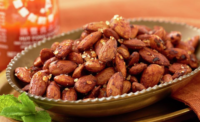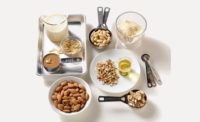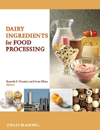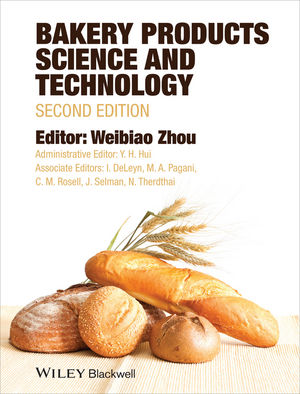Mattson, Almond Board of California collaborate on upcycling initiative
Upcycled almond hulls could be an ingredient in various bakery and snack products.

Photo: John Riches
Food scientists at Mattson and the Almond Board of California are collaborating on a project that seeks to establish almond hulls as a food ingredient. According to the research, the hulls (the soft, fruit-like covering that grows around an almond shell) can be used as an ingredient in a range of food and beverage products, including high-fiber bars, coffee, tea, and beer.
According to Mattson’s proof-of-concept research, almond hulls bring nutritional value in the form of fiber, vitamins, and minerals, while offering a unique flavor profile. With further adoption and demand from suppliers and manufacturers, almond hull flour reportedly could bring new nutritional, cost, and sustainability benefits in a variety of categories like bars, bakery products, and beverages.
This collaboration between Mattson and California's almond farmers reportedly has been in the works for more than a year with the goals of making almonds (a rare, nearly-zero waste agricultural food) even more sustainable, and to upcycle byproducts into new nutritious ingredients to enrich a range of food.
California grows 80% of the world’s almonds and is one of five places on earth with the Mediterranean-like climate needed to grow them. California’s almond farmers are committed to responsible growing practices, creating minimal waste, upcycling, and being strong stewards of the land for future generations.
With the same resources that grow an almond (land, water, nutrients) almond farmers also produce three other crops: the shells (used for livestock bedding and other products, including strengthening recycled plastics), the trees themselves (which take carbon from the air and are often ground back into the land, making it more nutrient dense and helping it hold moisture), and the hulls.
Interestingly, almonds are technically not nuts, but drupes, like peaches. The almond shell is like the pit of a peach, and the kernel is inside that pit or shell. The almond hull is like the flesh of a peach, though admittedly, less tasty for humans; they’re high in sugars but have too many bitter tannins.
Cows actually like that taste, so currently, for every pound of almonds California farmers produce, they produce about 1.5 pounds of hulls, and those hulls are sold as dairy feed. In 2022, almond hulls displaced the need for more than 400,000 acres of alfalfa, saving more than 1.3 million acre-feet of water—enough for more than 2 million households.
However, given the complexities of ag markets and the need for sustainable, nutritious foods, the almond industry continues to look for ways to innovate and create higher-value, even-more sustainable uses. That led to the partnership with Mattson, a San Francisco Bay Area company.
Mattson researchers have been testing how almond hulls and their unique flavor profile can be used to make high-fiber nutrition and energy bars, coffee or tea replacements, and, while they have not reached conclusions yet, they’re looking into beer. The researchers report they recently crossed a critical threshold: their proof-of-concept samples demonstrate that these sustainable, nutrient-rich, zero-waste ingredients are viable additions to future healthy food products, and offset the need to grow or produce other ingredients.
Looking for a reprint of this article?
From high-res PDFs to custom plaques, order your copy today!








